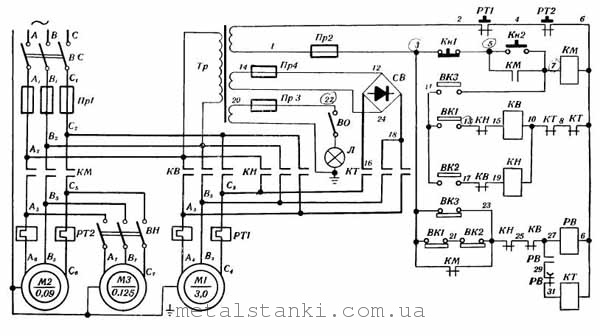Instrukciya Stanka Modelj 16b20p 061
Redni Broj Naziv Grad/Opina Ukupno 1 'SARGUS-ZADRUGA' Umag 8.328,72 2 'VELIKE LIVADE' OBRT ZA RIBARSTVO NULL 3.633,63 3 A & D.O.O. Buzet 6.297,60.
Portrait from, early Born, ( 1473-02-19), ( Thorn),, Died, (aged 70), ( Frauenburg),, Poland Fields,,,,,,,,,,,, Doctoral students Known for Religious stance Signature Nicolaus Copernicus (, –, ) was the first to formulate a scientifically based that displaced the from the center of the universe. His epochal book, ( On the Revolutions of the Celestial Spheres), is often regarded as the starting point of modern and the defining that began the.
Although, and had published heliocentric centuries before Copernicus, his publication of a scientific theory of heliocentrism, demonstrating that the motions of celestial objects can be explained without putting the Earth at rest in the center of the universe, stimulated further scientific investigations and became a in the that is known as the. Among the great of the, Copernicus was a,,,,,,,,,. Among his many responsibilities, astronomy figured as little more than an — yet it was in that field that he made his mark upon the world. Statue at ( Allenstein) Between 1516-1521 Copernicus was economic administrator in.
In this years He wrote manuscript -. Copernicus oversaw the defense of the castle of ( Allenstein) at the head of Royal Polish forces when the town was besieged by the Teutonic Knights during the. He also participated in the peace negotiations. Copernicus worked for years with the Royal Prussian diet, and with Duke, and advised Poland's King on. Holding the office of, he traveled extensively on government business and as a on behalf of the Prince-Bishop of Warmia.

He participated in the discussions in the diet about coin reform in the Prussian countries. One issue of concern to participants of the Diet was who had the right to mint. The task required much diplomacy, but proved to be a success. Some of the difficulties came about because of the political upheavals occurring in Prussia at the time, such as the establishment of the Duchy of Prussia as a Protestant state in 1525. Copernicus translated the coin reform treatise into Latin for external use. Winxp sp3 activation crack.
In 1530 an agreement with Duke Albert was negotiated at ( Elbing). In 1526 Copernicus wrote a study on the value of,. In it, Copernicus formulated an early iteration of the theory, now called ',' that 'bad' () drives 'good' (un-debased) coinage out of circulation, 70 years before Gresham. He also formulated a version of. Two years before Copernicus's death, Duke Albert urgently summoned him to to treat one of his counsellors, who was dangerously ill.
The patient recovered within a month or so, and Copernicus then returned to Frombork. In 1551, under Duke Albert's patronage, published the, a set of astronomical tables based on Copernicus's work, which astronomers and astrologers quickly adopted in place of those which they had superseded. Heliocentrism In 1514 Copernicus made available to friends his (Little Commentary), a six page hand-written text describing his ideas about the heliocentric hypothesis.
It contained seven basic assumptions. Thereafter he continued gathering data for a more detailed work. Some years ago word reached me concerning your proficiency, of which everybody constantly spoke. At that time I began to have a very high regard for you.
For I had learned that you had not merely mastered the discoveries of the ancient astronomers uncommonly well but had also formulated a new cosmology. In it you maintain that the earth moves; that the sun occupies the lowest, and thus the central, place in the universe. Therefore with the utmost earnestness I entreat you, most learned sir, unless I inconvenience you, to communicate this discovery of yours to scholars, and at the earliest possible moment to send me your writings on the sphere of the universe together with the tables and whatever else you have that is relevant to this subject. By then Copernicus's work was nearing its definitive form, and rumors about his theory had reached educated people all over Europe. Despite urgings from many quarters, Copernicus delayed with the publication of his book, perhaps from fear of criticism — a fear delicately expressed in the subsequent of his masterpiece to.
Scholars disagree on whether Copernicus's concern was limited to physical and philosophical objections from other natural philosophers, or whether he was also concerned about religious objections from theologians. Main article: Predecessors Early traces of a model are found in several anonymous texts composed in before the. Additionally, in the the astronomer and mathematician anticipated elements of Copernicus's work, although he did not maintain heliocentrism. In the elaborated some theories of (the daily rotation of the Earth on its axis, the revolution of Venus and Mercury around the Sun) to propose what was the first scientific model of a heliocentric solar system: the Earth and all other planets revolving around the Sun, the Earth rotating around its axis daily, the Moon in turn revolving around the Earth once a month. His heliocentric work has not survived, so we can only speculate about what led him to his conclusions. It is notable that, according to, a contemporary of Aristarchus accused him of impiety for 'putting the Earth in motion'. Copernicus cited and in a surviving early manuscript of his book, stating: 'Philolaus believed in the mobility of the earth, and some even say that Aristarchus of was of that opinion.'
